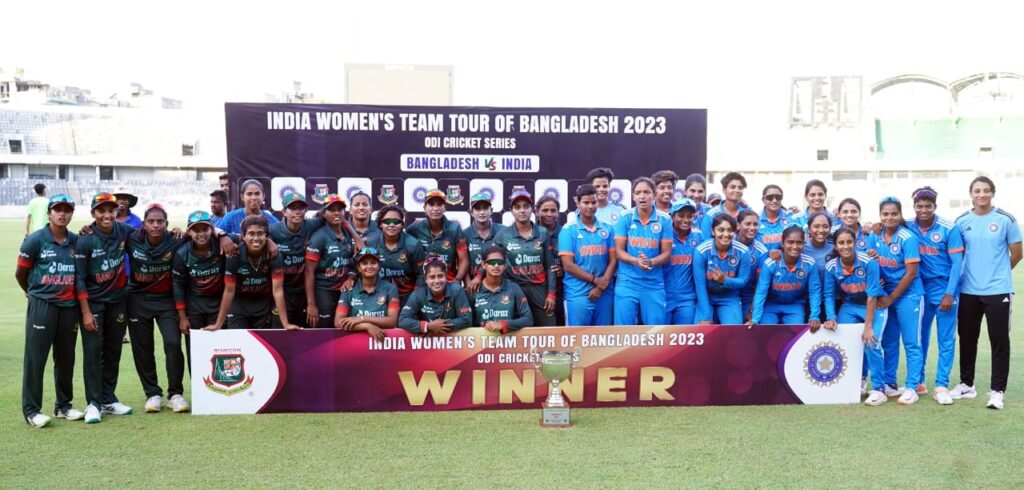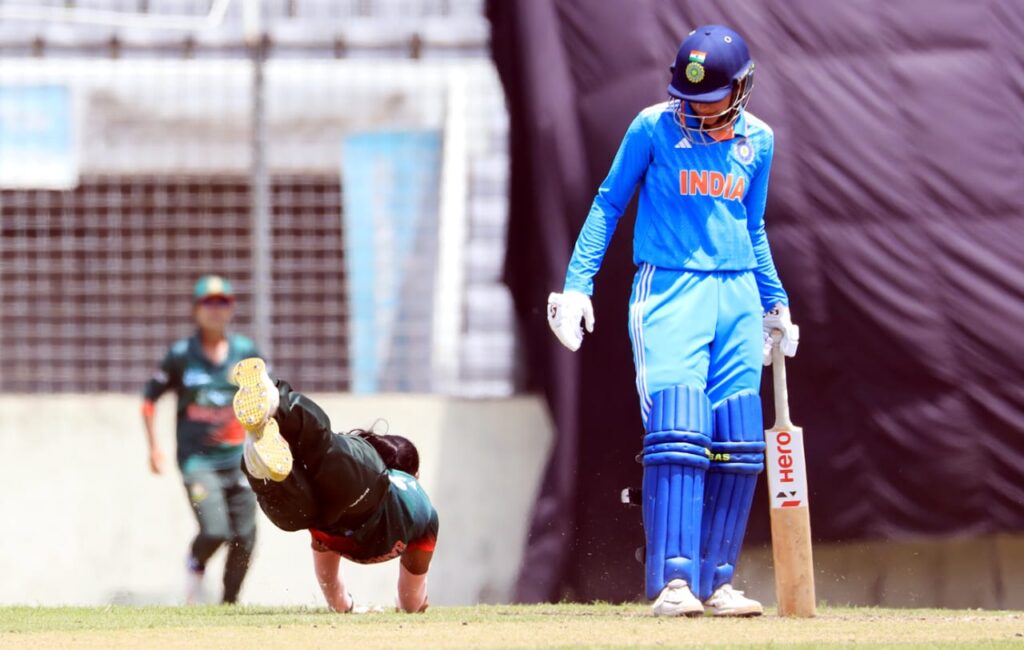
The India-Bangladesh women’s ODI series concluded on a sour note, with Harmanpreet Kaur, the Indian captain, going on a furious rant about “surprising” umpiring decisions and the absence of an invitation to the High Commissioner of India for the post-match presentation in the series decider, which ended in a thrilling tie. Before her rant, Harmanpreet had showcased her dismay about the umpiring decision that led to her dismissal in the third ODI by smashing the stumps. The entire episode was uncalled for, and has sparked various debates on social media. However, what cannot be hidden is India’s shambolic performance in both the T20I and ODI series.
Bangladesh entered the six-match limited-overs series, consisting of three T20Is and as many ODIs, as minnows but ended up winning as many matches against India (2) as they had in their entire prior cricketing history. Yes, the pitches weren’t ideal for batting, and there was no DRS available for the entire tour, but these conditions applied to both teams.
While Bangladesh displayed a spirited performance on the field, executing their bowling plans to perfection and showcasing significant improvement in their fielding, India struggled with their batting and fielding efforts.
Batting-wise, there was no standout performer. None. Jemimah Rodrigues did play a sublime knock in the second ODI but failed to carry her team over the line in the series decider. She kept on giving strike to tail-enders, resulting in a flurry of wickets.
Harmanpreet directed the blame towards the umpire for the tied match and failed to take any sort of accountability. As the most experienced batter in the team, she must know that scoring a total of 71 runs, including a 52, isn’t enough against Bangladesh, a team that had historically struggled against India.
At a time when the Women’s Premier League (WPL) was supposed to elevate the performance of the Indian team, this series against Bangladesh served as an eye-opener for the Women in Blue and the BCCI.
Shafali Verma, prodigal talent and swashbuckling opener, has been struggling with her batting form for a while now. Though she has picked up wickets and bowled well in the shortest format, her batting – her forte – has let her and the team down more often than not. Since 2022, Verma has scored 676 runs in 31 innings at a meagre average of 21.80 and a low strike-rate of 121.14. That’s neither consistent nor explosive.
Similarly, Smriti Mandhana, the star batter, has also struggled to score big, with an average of 28.90 and a strike rate of 122.97, totaling 289 runs in 12 innings in 2023. Mandhana’s struggle against spinners, especially off-spinners, has been evident in the ongoing year.

India lack power-hitters, be that in ODIs or T20Is, and that’s a fact. Apart from Shafali , there were none in the squad that traveled to Bangladesh. Richa Ghosh could have been an option, but there has been no official statement from the women’s selection committee on why the wicketkeeper was not picked in the team.
At a time when players like Alice Capsey, Nat Sciver-Brunt, Ashleigh Gardner, Grace Harris and Tahlia McGrath are setting new benchmarks in terms of power-hitting in women’s cricket, the Indian team still relies on anchors. However, the bigger question is the lack of strike rotation from the anchors themselves. A total of 440 dot balls were bowled by the Bangladeshi bowlers in the ODI series, out of 812 balls. In the T20I series, the Indians played 164 dot balls from 338 deliveries. This paints a sorry picture for the Indian batters, who despite their big reputations, have played out dots after dots. If the team had focused more on strike rotation, the results could have been different, and India were fortunate not to draw the T20I series. In all honesty, Bangladesh should have clinched it.
Moreover, the fielding efforts by both teams were in stark contrast. While Bangladesh players ran hard, dove around, and put in extra effort to save a single run or complete a catch, there was a sense of complacency from the Indian fielders. Drooping shoulders and zero intensity will not make this team one of the best fielding sides in the world.
More than the team, the women’s selection committee led by Neetu David needs to hold regular press conferences. Since the committee was formed, there has been no media interaction from the members. Ambiguity surrounds some selections and omissions, and when the captain or team management are asked about selection, they put the blame on the committee, which, so far, has not been answerable to the fans or the media. Some sort of accountability needs to be established.
With Amol Muzumdar likely to join as the head coach of the women’s team, one can only hope that sanity will prevail at a time when women’s cricket is at a crucial juncture. Only the right guidance can push it towards greatness; otherwise, despite the handsome money being pumped into the WPL, everything may fall apart.
Also Read: Harmanpreet in Danger of Tarnishing Legacy



